The Indian monsoon is a season of relief and joy – cooler weather, the smell of rain-soaked earth, and greener parks for our pets to play in. But for many pet parents, this time of year brings one common complaint: “Why does my dog smell funny in the monsoon?”
If you’ve noticed your furry friend smelling musty, sour, or just “off” during the rainy season, you’re not alone. In fact, veterinarians across India see a spike in skin and ear issues every monsoon, largely due to the humidity and dampness.
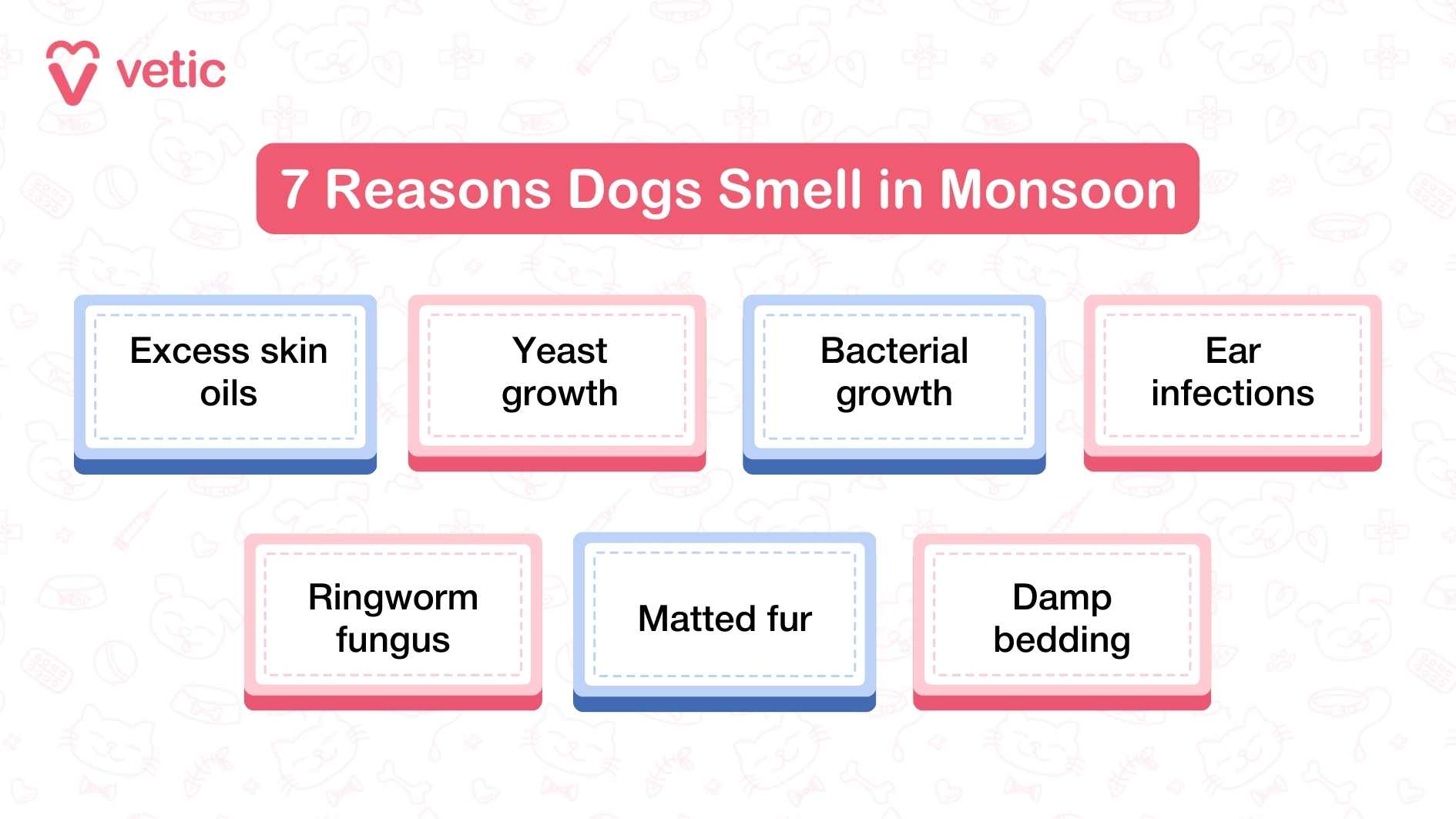
While some smells are simply the natural “wet dog odor,” others can indicate skin infections or ear infections that need veterinary attention.
Let’s explore the reasons behind this seasonal concern and understand how you can manage it effectively.
1. The Classic “Wet Dog Smell”
Every dog parent in India is familiar with this one. After a quick walk in the rain, your living room fills with that strong “doggy odor.”

Why it happens:
- Dogs naturally have oils and microbes on their skin.
- When the coat gets wet, these mix with water, releasing compounds into the air.
- Humid Indian weather slows down drying, so the smell lingers.
Indian context:
In cities like Mumbai, Kolkata, and Chennai where humidity is especially high, dogs can stay damp for hours after a rain-soaked walk causing changes to their natural smell. Rainwater, often mixed with mud and pollutants, adds to the odor.
2. Yeast Overgrowth: The Musty, Rancid Smell
Humidity creates the perfect breeding ground for yeast (Malassezia). If your dog smells musty, sweet, or rancid even after drying, yeast could be the cause.

Signs:
- Red, itchy skin
- Greasy or flaky patches
- Persistent odor from armpits, groin, or neck folds
Breeds in India at higher risk: Pugs, Shih Tzus, Bulldogs, and Golden Retrievers — popular city breeds prone to skin fold infections.
3. Bacterial Skin Infections (Hot Spots)
A very common rainy-season problem in India is pyoderma, often called “hot spots.” These infections occur when damp fur traps bacteria against the skin.

Signs:
- Foul odor, sharper than the usual doggy smell
- Oozing red patches that your dog scratches or licks
- Fur sticking together in localized areas
These infections are painful and need veterinary treatment.
4. Ear Infections in Humid Weather
Indian pet parents of floppy-eared dogs — Beagles, Cocker Spaniels, Labradors — often complain that their dog’s ears smell “sour” in the monsoon.
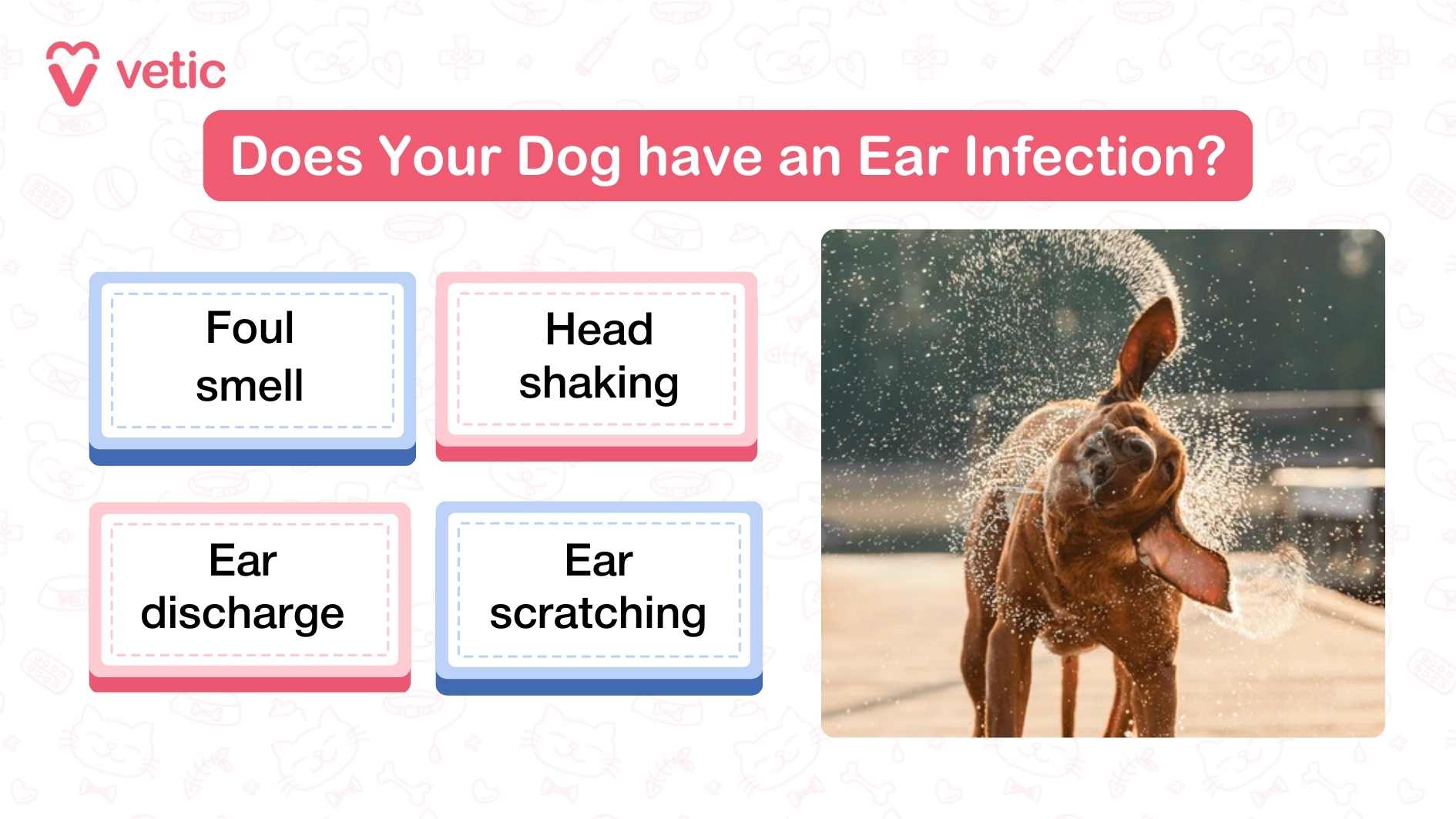
Why?
Moisture trapped in the ear canal leads to yeast or bacterial infections. These infections give off a strong sour, rancid odor and are usually accompanied by:
- Head shaking
- Scratching the ears
- Dark discharge or redness inside the ear
If you notice this, see your vet promptly — untreated ear infections can become chronic.
5. Ringworm in Dogs (Dermatophytosis)
Ringworm is a fungal infection common in Indies and can spread to pets at home, especially during monsoon when spores thrive.
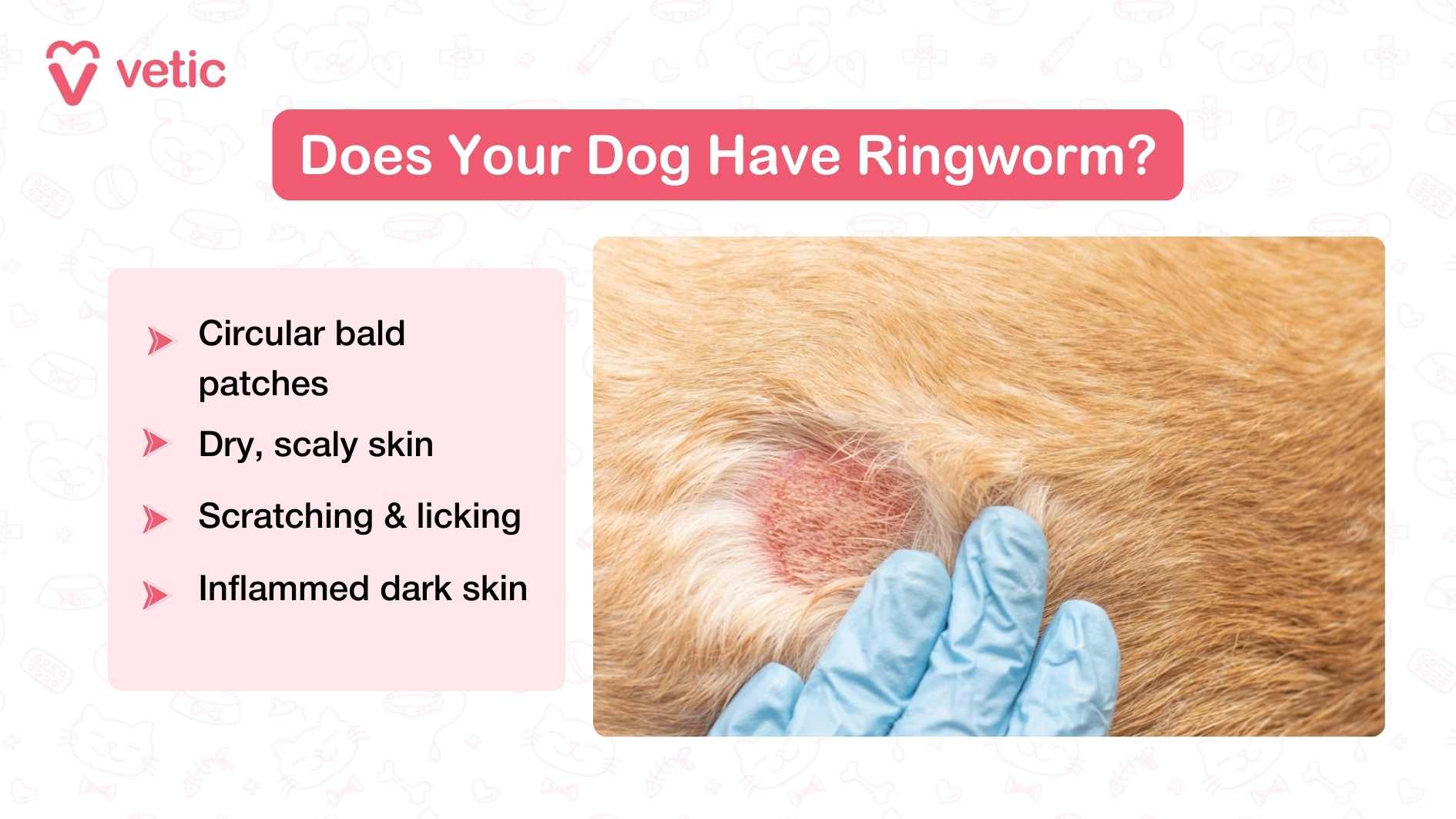
It usually doesn’t smell on its own, but can cause odor if combined with yeast or bacterial overgrowth.
Signs:
- Circular bald patches
- Red, scaly skin
- Possible spread to humans in the household
6. Matted Fur and Trapped Dirt
Long-coated dogs like Shih Tzus, German Shepherds, Huskies, or even Indies with thick fur often develop mats in the rainy season. These mats trap moisture, muck, mites, and bacteria, causing a dull, unpleasant odor.
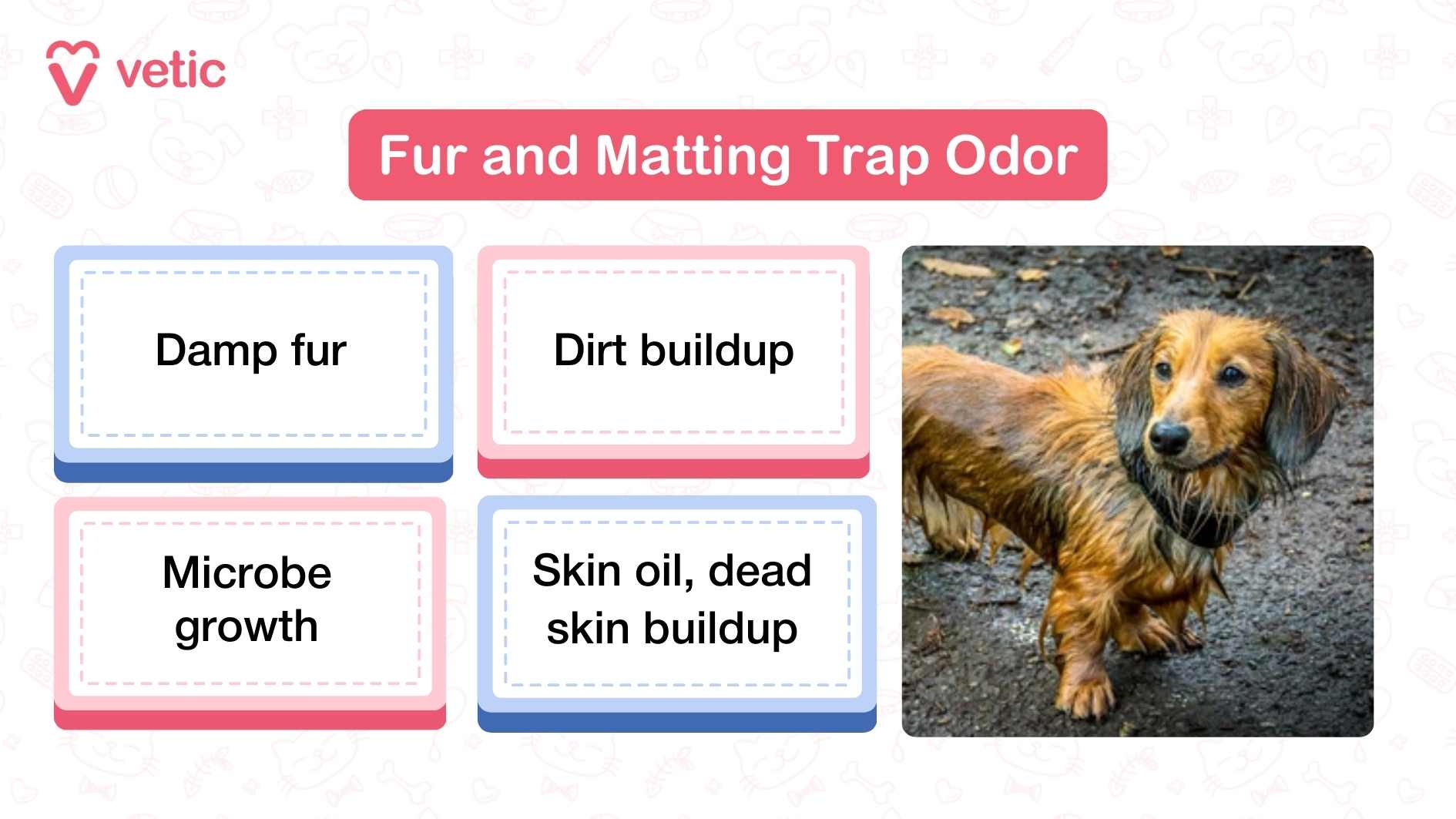
Regular grooming is essential — especially in Indian metros where dust and polluted rainwater add extra grime.
7. Environmental Smells: Bedding and Floors
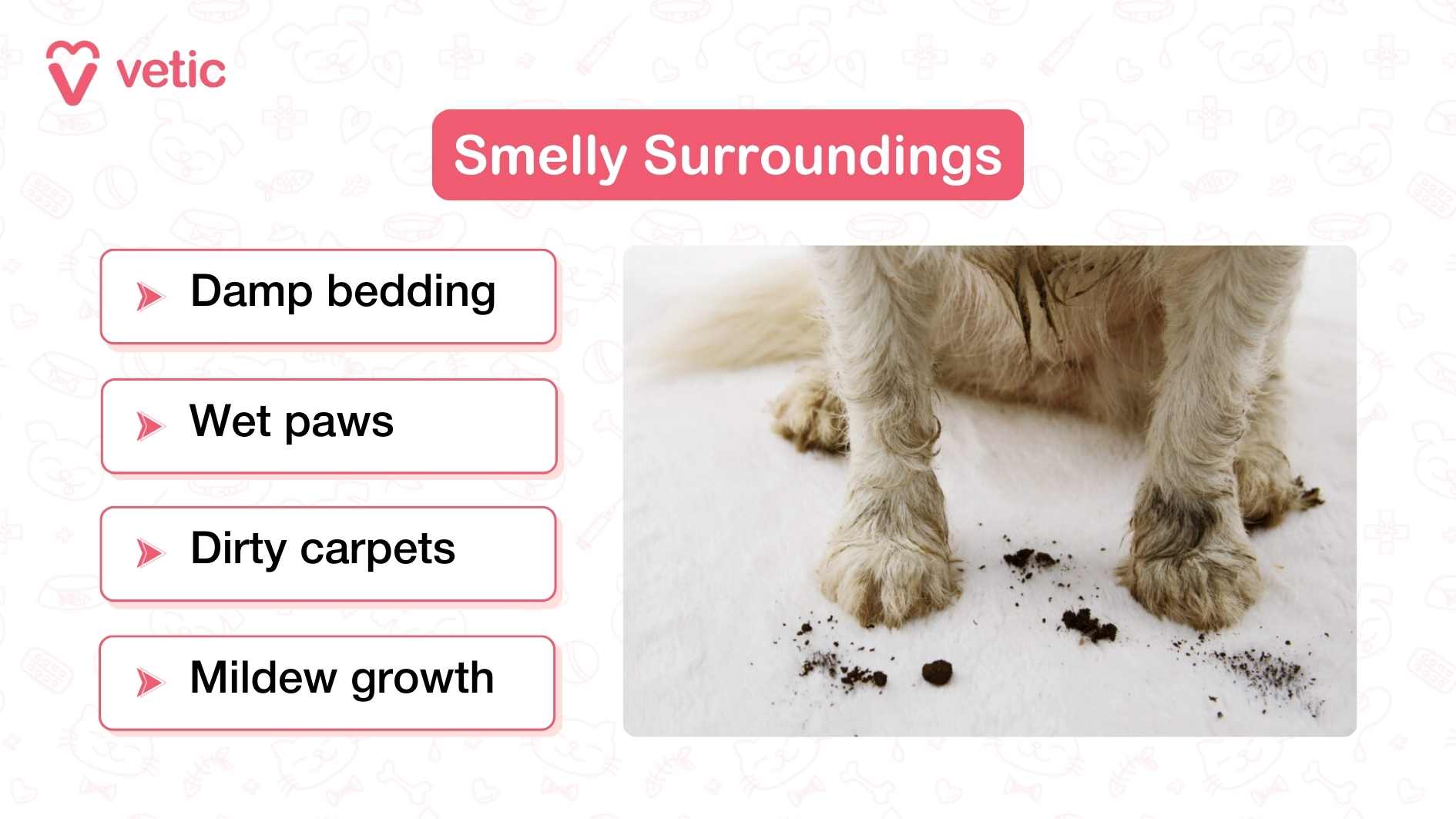
Sometimes, the odor isn’t only from your dog but from their surroundings:
- Damp bedding in Indian homes (especially apartments without much sunlight) often harbors mildew and contributes to the smell.
- Wet paws from muddy streets bring in bacteria and debris. Pododermatitis can also be a cause of the funny dog
- Sofas, carpets, and mats absorb moisture and amplify odors during monsoon.
Washing bedding weekly and sun-drying (where possible) makes a huge difference.
How to Control Dog Smell in the Rainy Season
Instead of covering up the smell with powders or sprays, focus on good hygiene and timely veterinary care.

1. Weekly Bathing with Vet-Recommended Shampoo
- Use an antifungal or antibacterial shampoo if your vet advises.
- Always rinse thoroughly and dry completely.
- Avoid over-bathing, which can strip natural oils.
2. Proper Drying After Walks
- Towel-dry thoroughly after exposure to rain.
- Use a blow-dryer on low heat for thick-coated dogs.
- Pay attention to “hidden spots” like between toes, groin, and under the tail.
3. Daily Brushing
- Brushing improves air circulation in the coat and reduces matting.
- For long-haired breeds, brushing twice a day in monsoon is ideal.
4. Ear and Paw Care
- Clean ears once a week with a vet-prescribed solution.
- Keep paws trimmed and dry to prevent fungal infections.
5. Bedding and Home Hygiene
- Wash bedding in hot water weekly.
- Dry thoroughly in the sun or under a fan.
- Mop floors with pet-safe disinfectants, especially after rainy walks.
Dog Smells Funny in Monsoon: When You Should Worry
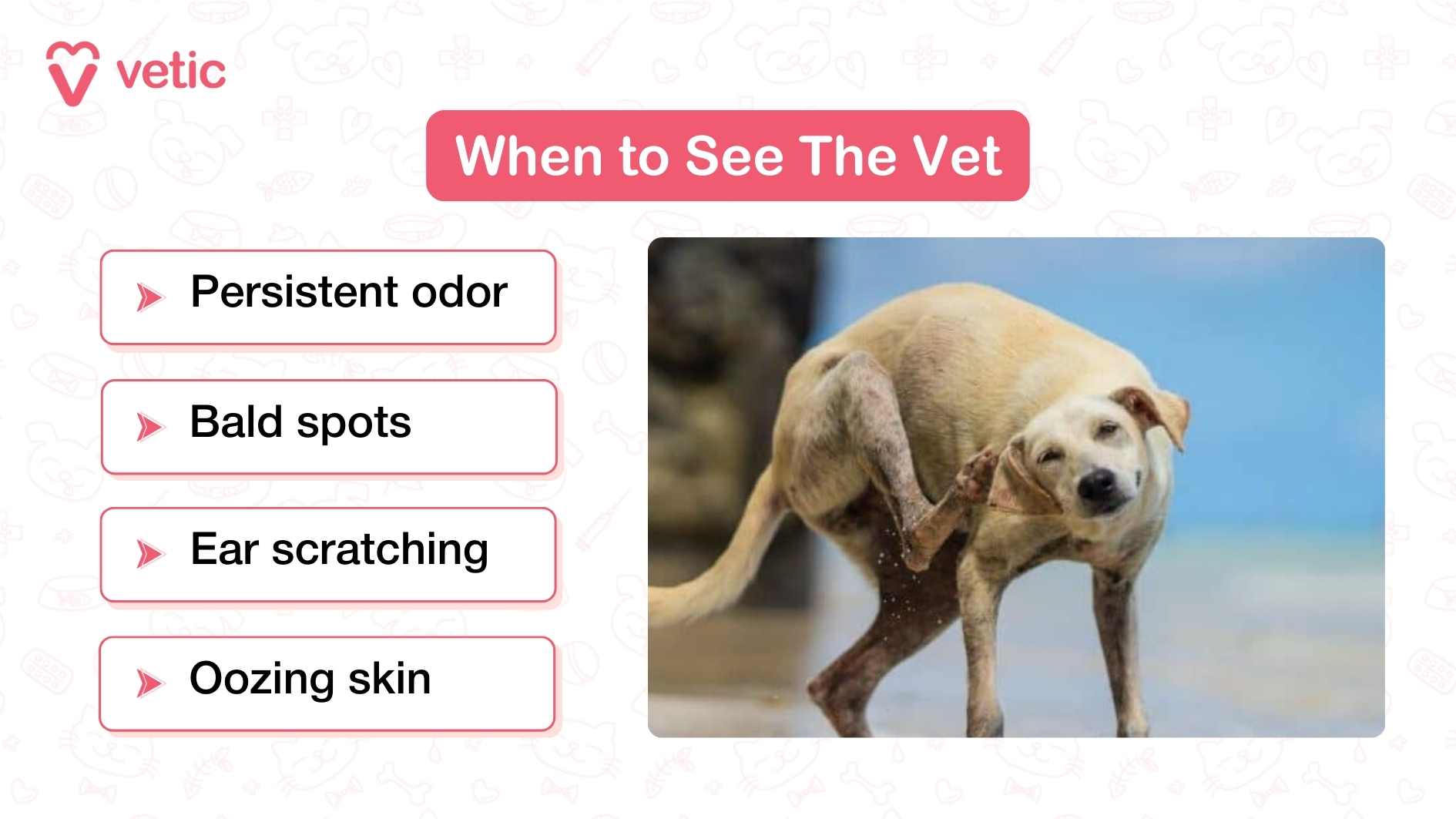
If you notice:
- Persistent odor despite grooming
- Bald patches, redness, or oozing skin
- Head shaking or scratching at ears
It’s time to visit your vet. Many skin and ear conditions worsen quickly in India’s humid weather if left untreated.
Final Thoughts
So, why does your dog smell funny in the monsoon? In most cases, it’s just the familiar “wet dog smell” made stronger by India’s humid, rainy climate. But sometimes, that odor is your pet’s way of signaling skin infections, yeast overgrowth, or ear problems.
The takeaway for Indian pet parents is simple: stay proactive with hygiene, grooming, and vet check-ups. By keeping your pet clean, dry, and comfortable, you’ll not only manage the smell but also prevent common rainy-season skin and ear issues.
References:
American Kennel Club (AKC). Why Do Wet Dogs Smell So Bad?
VCA Animal Hospitals. Yeast Dermatitis in Dogs
Cornell University College of Veterinary Medicine. Canine Ear Infections
MSD Veterinary Manual. Superficial Pyoderma in Dogs
PetMD. Ringworm in Dogs
The Hindu (India). Monsoon Care Tips for Pets
